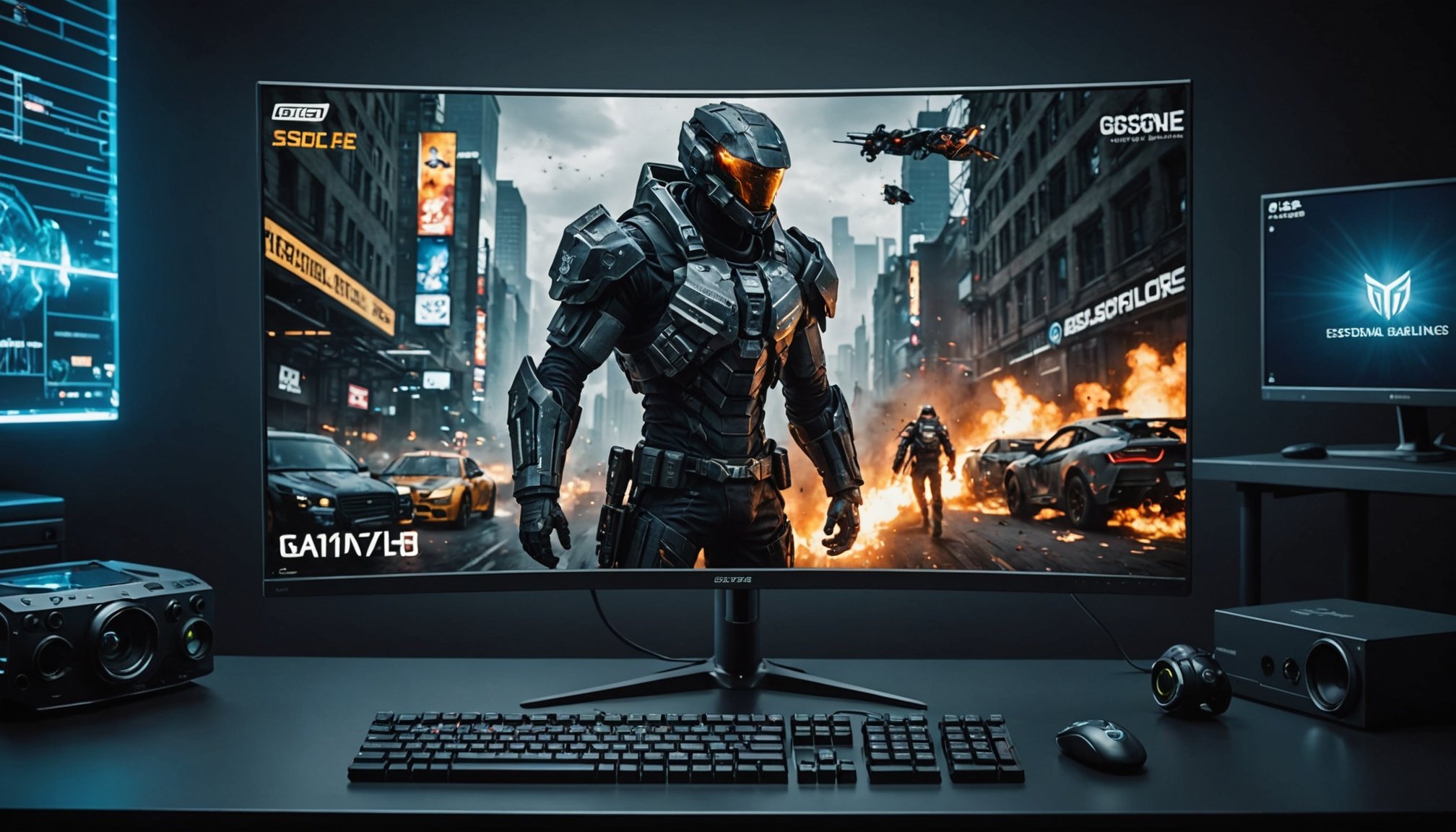Key Specifications of Gaming Monitors
To achieve the best gaming performance, understanding which essential gaming monitor specs matter most is crucial. The native resolution of a monitor plays a significant role. Higher resolution offers clearer and more detailed images, enhancing the visual experience. Common resolutions range from Full HD to 4K, with higher resolutions being ideal for visually rich games.
Another critical specification is the refresh rate. Higher refresh rates, such as 144Hz or 240Hz, are particularly beneficial for smoother gameplay. They reduce motion blur, which can be a game-changer during fast-paced scenes, making every movement fluid and responsive.
In parallel : Top tips for safely overclocking your gpu: what you need to know
Equally important is the monitor’s response time. Lower response times are preferable, as they minimize motion blur and ghosting, which can distract during intense gaming sessions. A typical response time for gaming monitors is 1ms to 5ms.
When considering monitor features, take into account how each one affects your gaming experience. A balance of high resolution, adequate refresh rate, and low response time ensures optimal performance. The choice of specifications will depend on personal preferences and gaming needs, allowing for a tailored setup that enhances both casual and competitive gaming.
Topic to read : Exploring the influence of ram speed on gaming performance: a comprehensive guide
Types of Display Panels
Deciphering panel types is essential in optimizing your gaming experience. TN panels (Twisted Nematic) have a reputation for exceptionally fast response times which benefits frenetic gameplay. However, they usually compromise on colour accuracy and viewing angles, making them less suitable for games where immersive visuals are key.
TN Panels: Advantages and Disadvantages
TN Panels offer superior speed, ideal for intense gaming sessions needing rapid screen refreshes. However, they often lack the robust colour representation offered by other panels and can display washed-out hues, affecting image quality.
IPS Panels: Image Quality and Performance
IPS panels (In-Plane Switching) shine with superior colour accuracy and wider viewing angles compared to TN panels, making them perfect for games rich in visual detail. They, however, may have slightly slower response times, posing challenges in fast-action scenes.
VA Panels: Contrast Ratios and Use Cases
VA panels (Vertical Alignment) present a middle ground with excellent contrast ratios, excelling in deeper blacks and vibrant visuals. Despite these advantages, their response times can be inconsistent, occasionally resulting in minor motion blur, which might not suit fast-paced gaming.
Additional Features to Consider
When evaluating gaming monitor features, understanding the benefits of adaptive sync technologies is pivotal. G-Sync and FreeSync are designed to eliminate screen tearing by synchronizing the monitor’s refresh rate with the graphics card’s frame rate. This results in smoother gameplay, crucial for action-heavy games. Choose based on your graphics card’s compatibility—G-Sync for NVIDIA and FreeSync for AMD.
High Dynamic Range (HDR) is another feature enhancing visual depth and detail. HDR provides a wider color range and contrast, making in-game visuals more realistic and immersive. It highlights intricate details in both dark shadows and bright highlights.
Consider connectivity options such as HDMI and DisplayPort. DisplayPort often supports higher resolutions and refresh rates, advantageous for competitive gaming. HDMI, however, is broadly compatible with various devices, offering versatility.
Incorporating these features into your monitor choice can dramatically uplift your gaming environment. While HDR transforms game aesthetics, adaptive sync technologies optimize performance. Meanwhile, the right connectivity ensures full utilization of your monitor’s capabilities. Evaluating these elements can lead to a more tailored and immersive gaming experience, allowing users to fully enjoy the technological advancements in today’s gaming monitors.
Practical Tips for Choosing the Right Monitor
Choosing the ideal gaming monitor requires careful consideration of essential gaming monitor specs. Begin by setting a budget and identifying the key specs that need prioritizing. The balance between cost and performance is crucial. Higher resolution, for example, may improve clarity but increase costs.
Understanding your gaming needs is equally important. Are you a casual player or a competitive gamer? A casual gamer might focus on immersive visuals and rich colors, while a competitive player might prioritize a high refresh rate and quick response time to gain an edge in fast-paced scenarios.
Additionally, future-proofing your setup is worthwhile. This involves anticipating technological advancements to ensure longevity. Opt for features like adaptive sync technologies or HDR that offer clear benefits and can adapt to future game releases.
Ultimately, monitor features should complement your gaming performance aspirations. Look ahead in terms of connectivity and ergonomics to allow for seamless upgrades. By weighing these factors thoughtfully, you are more likely to find a monitor that not only meets your current needs but continues to serve you well into the future. Choose wisely, and enjoy your enhanced gaming adventures!
Impact of Specs on Gameplay Experience
In the realm of gaming, the correlation between gaming performance and the essential gaming monitor specs is undeniable. A monitor with a high refresh rate, such as 144Hz or 240Hz, significantly impacts a gamer’s edge, especially in competitive settings where every millisecond counts. This high refresh rate ensures that motion appears fluid, drastically reducing any lag during fast-paced action sequences.
Resolution is another pivotal factor in crafting an immersive visual journey. A higher native resolution, like 4K, not only enhances image clarity but also enriches the overall gaming experience by delivering strikingly detailed and life-like graphics. Gamers will find themselves engrossed in rich landscapes and intricate environments, adding depth and excitement to their adventures.
Moreover, response time plays a critical role in determining the visual quality, particularly for fast-action games. A lower response time, ideally between 1ms to 5ms, lessens motion blur and prevents ghosting effects, which can otherwise detract from the visual pleasure during gameplay.
Real-world examples illustrate these impacts vividly. Competitive gamers using monitors with high refresh rates often report noticeable improvements in reaction times, while visually-focused gamers revel in the vibrant and realistic worlds rendered by high-resolution screens. Investing in these specs can transform the gaming experience from ordinary to extraordinary.










